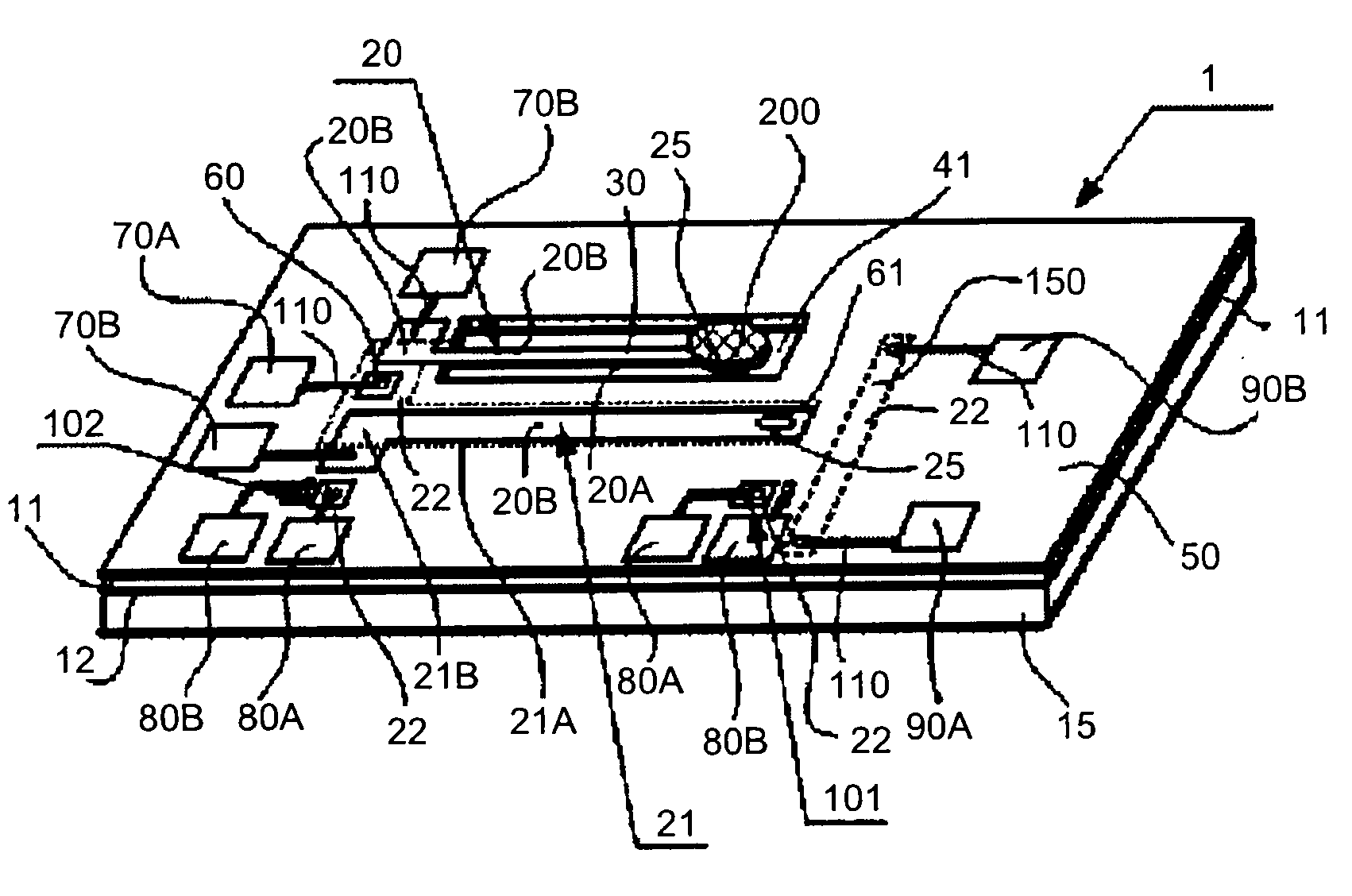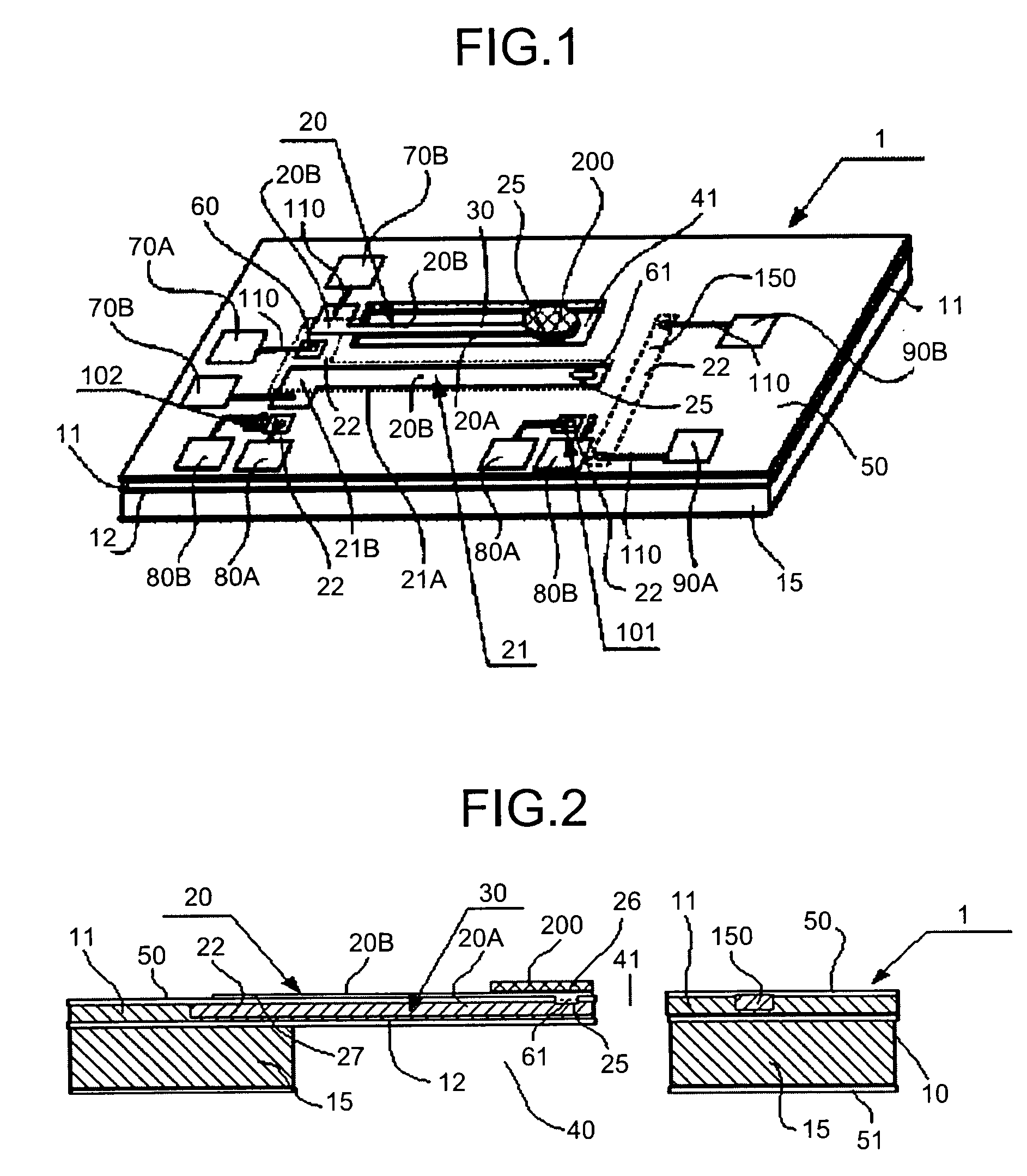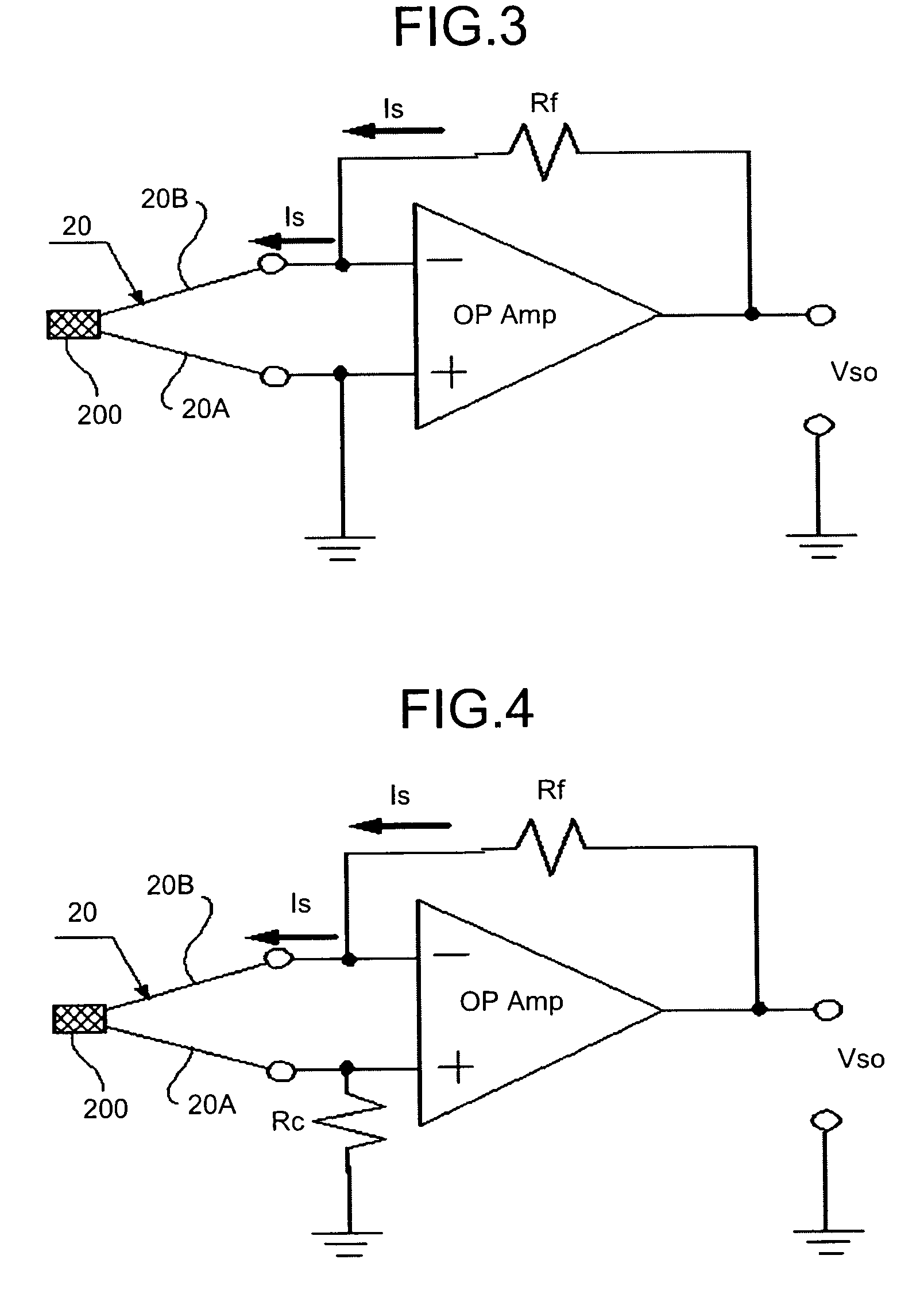Calibrating Method of Current Detection Type Thermocouple or the Like, Calibration Method of Offset of Operational Amplifier, Current Detection Type Thermocouple, Infrared Sensor and Infrared Detector
a current detection type, thermocouple technology, applied in the direction of instruments, heat measurement, calorimeters, etc., can solve the problems of inability to establish calibration methods for precisely detecting temperature changes, extreme internal resistance of thermopiles, etc., to achieve easy calibration, large temperature difference tr, and high precision
- Summary
- Abstract
- Description
- Claims
- Application Information
AI Technical Summary
Benefits of technology
Problems solved by technology
Method used
Image
Examples
first embodiment
[0135]FIG. 1 is a schematic perspective view of an example of a sensor chip 1 provided onto a current detection type thermocouple, explaining the current detection type thermocouple and a calibration method thereof according to an embodiment of the present invention. In this embodiment, the sensor chip 1 is implemented as a thermal infrared sensor using a detecting thermocouple 20. The sensor chip 1 is provided onto a calibrating thermocouple 21, a pair of calibrating temperature sensors 101, 102, and a self-heating heater 150. In this embodiment, a substrate 10 (SOI substrate) having a p-type SOI layer 11 is used to form an n-type diffusing area 22, by adding a n-type impurity, such as phosphorus, onto the SOI layer 11 in a high density just enough to degenerate. This n-type diffusing area 22 is used as one of conductors, a conductor 20A, of the detecting thermocouple 20 and the calibrating thermocouple 21. The other conductor 20B is made of nickel (Ni), for example, and the detect...
second embodiment
[0143]FIG. 5 is a schematic perspective view of another example of the sensor chip 1 provided with a current detection type thermocouple, explaining the current detection type thermocouple and a calibration method thereof according to an embodiment of the present invention. FIG. 5 is basically same as FIG. 1 mentioned above. However, FIG. 5 is different from FIG. 1 in that a thermocouple including different conductors 120A, 120B is used as the temperature sensor 101 for detecting the temperature difference in the calibrating thermocouple 21. This thermocouple may be manufactured, for example, using gold (Au) and nickel (Ni) for each of the conductor 120A and 120B.
third embodiment
[0144]In this embodiment, instead of the heater 150 formed on the substrate in the first and the second embodiments (shown in FIG. 1 and FIG. 5, respectively), the heater 150, not shown, is manufactured separately and brought near or in contact with the substrate. In this manner, the detecting thermocouple 20 is calibrated using the calibrating thermocouple 21 and a pair of the temperature sensors 101, 102 (using only the temperature sensor 101 in some situations), and following the method described above.
PUM
| Property | Measurement | Unit |
|---|---|---|
| resistivity | aaaaa | aaaaa |
| ON resistance | aaaaa | aaaaa |
| temperature | aaaaa | aaaaa |
Abstract
Description
Claims
Application Information
 Login to View More
Login to View More - R&D
- Intellectual Property
- Life Sciences
- Materials
- Tech Scout
- Unparalleled Data Quality
- Higher Quality Content
- 60% Fewer Hallucinations
Browse by: Latest US Patents, China's latest patents, Technical Efficacy Thesaurus, Application Domain, Technology Topic, Popular Technical Reports.
© 2025 PatSnap. All rights reserved.Legal|Privacy policy|Modern Slavery Act Transparency Statement|Sitemap|About US| Contact US: help@patsnap.com



